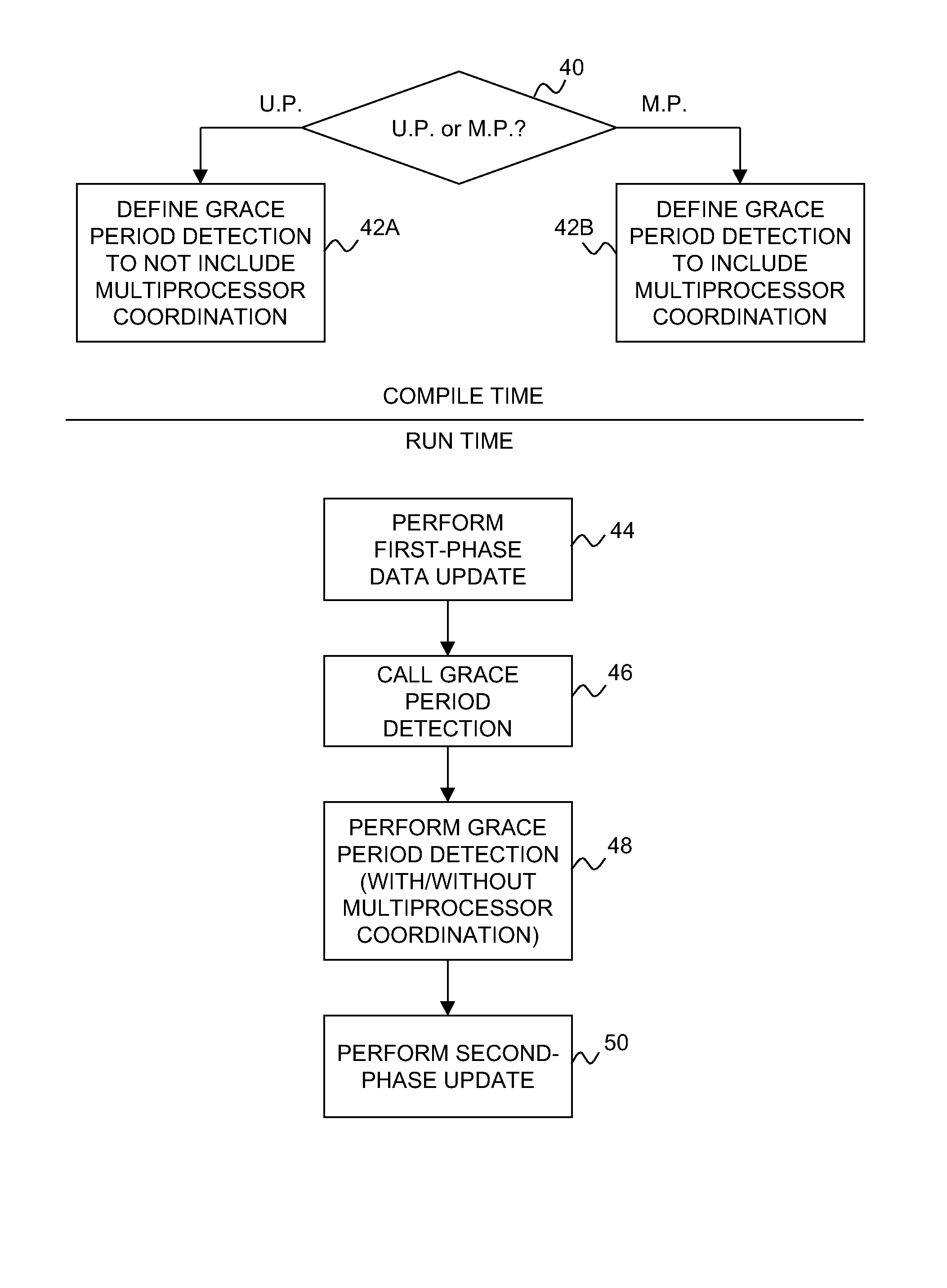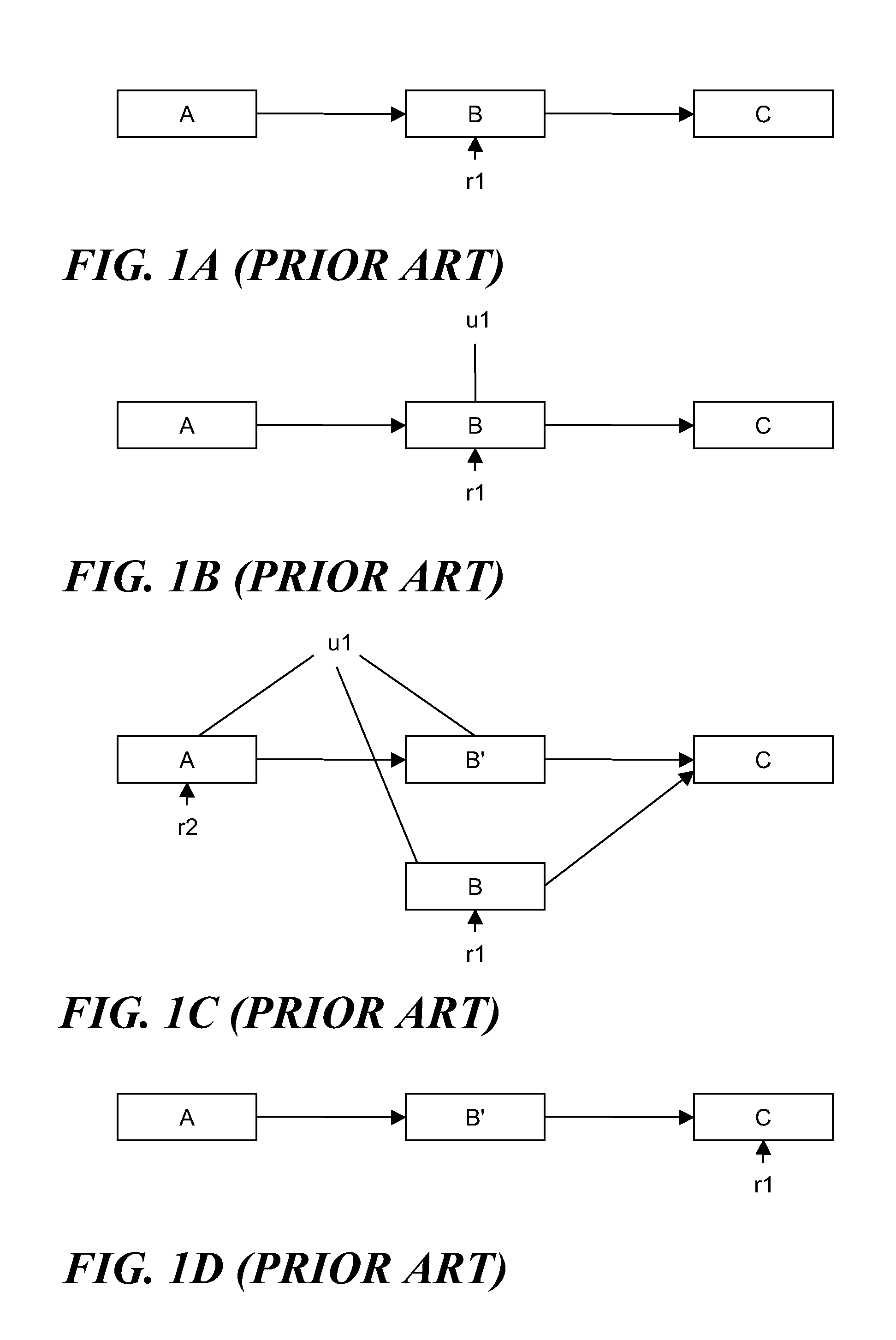Optimizing grace period detection for preemptible read-copy update on uniprocessor systems
a technology of uniprocessor systems and grace periods, applied in the field of computer systems, can solve the problems of not being validly used for grace period detection, burdensome read-side lock acquisition, and affecting the detection efficiency of preemptible read-copy updates, and the coordination effort required for some types of preemptible rcu grace period detection can be significan
- Summary
- Abstract
- Description
- Claims
- Application Information
AI Technical Summary
Problems solved by technology
Method used
Image
Examples
example 1
SRCU
[0051]Sleepable RCU is a preemptible RCU implementation that allows RCU readers to sleep or otherwise delay within RCU critical sections. Because readers may block for extended periods, asynchronous grace period detection is not permitted. Updaters are required to perform synchronous grace period detection. Readers are grouped by subsystem to minimize the likelihood of an errant reader delaying grace period detection for the entire system. Each subsystem is assigned a data structure of type “srcu_struct” that is used by readers within the subsystem for RCU critical section registration and unregistration, and by updaters for grace period detection. Each SRCU data structure holds a (1) count of elapsed grace periods, (2) pointers to per-processor counter pairs, and (3) a mutex lock. Each per-processor counter pair includes an active counter for counting read operations commenced during the current grace period and an inactive counter for counting read operations commenced during ...
example 2
Real-Time RCU
[0058]Real-time RCU is a preemptible RCU version that protects RCU readers from premature grace period processing even if the readers are preempted. Readers are tracked using per-processor counter pairs that are indexed using the current grace period number. As in SRCU, one of the per-processor counters is incremented / decremented by readers who began their RCU critical during the current grace period. The other per-processor counter is used by readers that began their RCU critical sections during the last grace period. Once a new grace period is started, the counters associated with the previous grace period are only decremented, and thus will ultimately count down to zero as readers complete their critical sections. In a real-time RCU implementation, the reader registration component 22 of FIG. 5 could be implemented using the rcu_read_lock( ) primitive. This primitive registers a reader for RCU critical section by incrementing the per-processor counter associated with...
PUM
 Login to View More
Login to View More Abstract
Description
Claims
Application Information
 Login to View More
Login to View More - R&D
- Intellectual Property
- Life Sciences
- Materials
- Tech Scout
- Unparalleled Data Quality
- Higher Quality Content
- 60% Fewer Hallucinations
Browse by: Latest US Patents, China's latest patents, Technical Efficacy Thesaurus, Application Domain, Technology Topic, Popular Technical Reports.
© 2025 PatSnap. All rights reserved.Legal|Privacy policy|Modern Slavery Act Transparency Statement|Sitemap|About US| Contact US: help@patsnap.com



